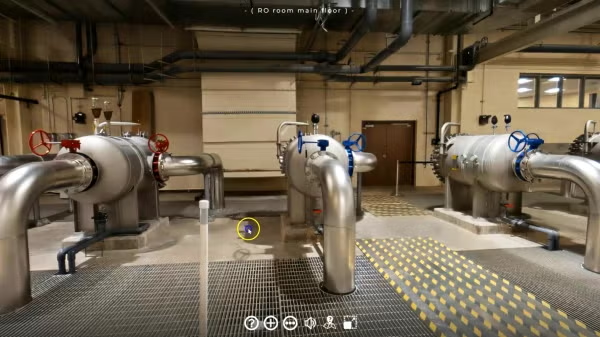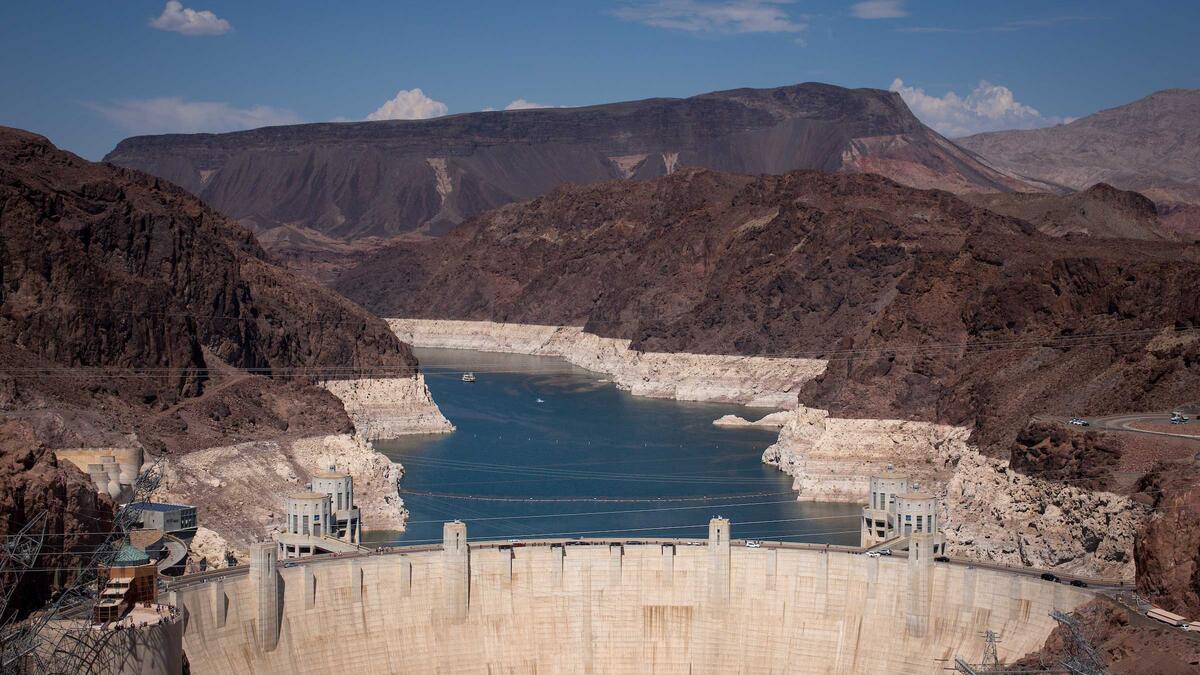Greg Stanton didn’t need a historic drought and near collapse of the Colorado River to understand the importance of water security.
As a member of the Phoenix City Council and later as mayor, Stanton guided one of the largest utilities in the country. The city manages several thousand miles of water and sewer lines, eight treatment plants, dozens of pump stations, reservoirs and wells along with 50,000 fire hydrants and nearly twice that many manholes across a 540-square-mile city.
Innovative approaches to managing water — from agreements with the Gila River Indian Community and the city of Tucson to Phoenix investing in protecting the watershed of Salt and Verde river watersheds — were a signature of Stanton’s time as mayor.
Today, as a member of Congress, and with water levels at Lakes Mead and Powell declining to record lows, Stanton continues to push to protect Arizona’s water.
“All of the work we are doing to create jobs, continue to grow our semiconductor industry and lead the way on innovation doesn’t matter unless we have water,” he said. “It’s the foundation for everything — and we’re in the midst of a crisis. We have to get it right.”
Stanton says one of his most valuable resources is Arizona State University's Kyl Center for Water Policy, which works to advance research, analysis and collaboration around building consensus on water stewardship for Arizona and the western United States.
The center is a resource for public policy that Stanton and other decision-makers tap into for intelligence and resources for guidance.
Kyl Center leaders like Kathryn Sorensen, the director of research, who spent time in her career working for water departments in municipal government, said that federal infrastructure investment is essential and that its intervention is sometimes necessary to ensure “reasonable outcomes” along the Colorado River.
“Arizona has a long and storied history of congressional members standing up to California on Colorado River issues,” Sorensen said. “As we look to the future, while Arizona may never be as populous as California, we are now growing at the fastest rate in the southwestern United States.”
Investments that Stanton has delivered are already making a difference, she said.
In his first term in Congress, Stanton authored Arizona’s Environmental Infrastructure Authority, which was signed into law by President Trump. The $150 million authority provides funds to Arizona communities to meet their water and wastewater infrastructure needs and has already delivered funds for 16 water projects throughout Arizona.
Through the bipartisan Water Resources Development Act of 2022, Stanton secured $37.5 million to re-open the city of Tempe’s Kyrene Water Reclamation Facility and groundwater recharge facilities, and $18.75 million to address aging infrastructure at the city of Chandler’s Ocotillo Water Reclamation Facility.
Because of Stanton’s work, a House appropriations bill includes $3 million to help Chandler build yet another new water reclamation plant that will support Intel’s expansion in the city.
“That’s one of the best examples of how better using the water we do have can help support and create new jobs,” Stanton said.
Stanton said that smarter infrastructure and better planning are key pieces of the puzzle — but the bigger challenge is saving the Colorado.
“Colorado River governance is complicated. It involves a mix of federal legislation, inter-state compacts, tribal water settlements, international treaties, U.S. Supreme Court cases and more,” said Sarah Porter, director of the Kyl Center for Water Policy.
And while leaders like Stanton are focused on the public policy, with multiple players involved, limited resources available and the added pressure of a worsening drought invariably politics comes into play.
It has always been the case — the original Colorado River Compact of 1922 involved seven states and the federal government. The goal was a “fair allocation” of the river’s water among the seven basin states so they would know how much water they could remove and could plan accordingly.
One hundred years later, the river is “over-allocated” and the debate rages again. What policy promotes fairness and the equitable distribution of resources?
READ MORE: Running out of river, running out of time
That was the subject of a recent Colorado River Symposium held in late September in Santa Fe, New Mexico, involving Secretary of the Interior Deb Haaland, Assistant Secretary for Water and Science Tanya Trujillo and Bureau of Reclamation Commissioner Camille Calimlim Touton.
Kyl Center leadership played a role in the conference and produces projects like the ASU Colorado River Visualization Enterprise, or the CuRVE Project, which is intended to democratize information about the Colorado River shortage. That means not only making the data available and easy to understand, but also presenting it in a politically neutral way.
California’s large population has meant that it always had more influence in the debate over the river. And to secure financing for the Central Arizona Project, which brings Colorado river water into Maricopa, Pima and Pinal counties, state leaders had to accept that during shortages, Arizona’s supply would be cut first during times of shortage.
Stanton and other leaders, though, contend that to save the river, Arizona alone can’t take cuts — that all states will have to sacrifice.
He wrote as much in a recent letter to California Gov. Gavin Newsom.
“As the Colorado River system faces dead pool without the urgent action of all basin states — which would devastate our regional economy — I am deeply concerned that California is failing to do its part to avert that catastrophe,” he wrote.
Stanton remembers serving at that local level and he knows that every community in the seven basin states has its own perspective but also shares a stake in the outcome. The only way forward is to work together — with haste.
“Bold action to safeguard our water supply has never been more critical,” he said. “States and the federal government need to act with the urgency that this crisis demands before it’s too late.”
Top photo of Lake Mead and Hoover Dam by Charlie Leight/ASU News
More Environment and sustainability

2 ASU faculty elected as AAAS Fellows
Two outstanding Arizona State University faculty spanning the physical sciences, psychological sciences and science policy have been named Fellows of the American Association for the Advancement of…

Homes for songbirds: Protecting Lucy’s warblers in the urban desert
Each spring, tiny Lucy’s warblers, with their soft gray plumage and rusty crown, return to the Arizona desert, flitting through the mesquite branches in search of safe places to nest.But as urban…

Public education project brings new water recycling process to life
A new virtual reality project developed by an interdisciplinary team at Arizona State University has earned the 2025 WateReuse Award for Excellence in Outreach and Education. The national …


